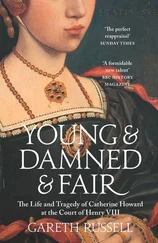‘The place was finallyraided by the police,’ Pinkerton reported, but this time the Sûreté were not going to be beaten by Worth’s alarm system. ‘The bar-tender wasseized as soon as they entered, and rushing upstairs, they found the gambling in full blast.’ Worth and Kitty, by lucky chance, were not in the building at the time, but ‘Wells [Bullard] and others[a pair of unfortunate croupiers] were arrested and charged with maintaining a gambling house, but were admitted to bail.’ Bullard, the nominal owner of the bar, skipped bail and fled to London, leaving Worth and Kitty to sort out what remained of the business.
Worth later told Pinkerton that he had already decided the bar would ‘never again be a successthe way he wanted it’, and the club was sold to an ‘English betting manor bookmaker named Jack Ballentine’ who kept it going for two more years before the American Bar was finally closed.
Pinkerton later wrote, on Worth’s authority, that ‘the ruction whichI kicked up was the means of ruining Bullard in Paris, driving him out, breaking up the bar and sending, as he termed it, all of them on the bum.’ But rather than resenting Pinkerton’s rude intrusion into his affairs, Worth seems to have admired Pinkerton’s detective efforts. ‘Afterwards when wemet in London [he said] that he had always fancied me and found that I was a man who kept his own counsel and that he had always felt a kindly feeling towards me,’ Pinkerton wrote. They might be on opposite sides of the law, but the thief and the detective had already developed a healthy respect for one another’s talents, which would eventually blossom into a most unlikely friendship.
So far from being ‘on the bum’, Worth was still a substantially wealthy man. The breaking up of the American Bar simply closed one chapter in his life and opened another. He increasingly craved, for himself and the aspiring Kitty, if not genuine respectability, then at least its outward trappings and, at the age of just thirty-one, he could afford them.
There was really only one destination for a man of social and criminal ambition, and that was London, centre of the civilized world, where the gentlemanly ideal had been elevated to the status of a religion, abounding with wealth and, therefore, felonious opportunity.
Victorian Britain was reaching the pinnacle of its Greatness, and smugness. ‘The history of Britainis emphatically the history of progress,’ declared the intensely popular writer T.B. Macaulay. ‘The greatest and most highly civilised people that ever the world saw, have spread their dominion over every quarter of the globe.’ A similar note of patriotic omnipotence was struck earlier by the historian Thomas Carlyle: ‘We remove mountains, and make seas our smooth highway, nothing can resist us. We war with rude nature, and by our restless engines, come off always victorious, and loaded with spoils.’ For a crook at war with the natural order, such heady recommendations were irresistible. Huge spoils, and the social elevation they brought with them, were precisely what Worth had in mind.
Piano Charley was already across the Channel, operating under the cover of a wine salesman and steadily drinking a large proportion of his supposed wares. Worth, Kitty and the rest of the gang packed up what was left from the American Bar – the chandeliers, brass fittings and oil paintings – and merrily headed back across the Channel to the great English metropolis.
The upper floors of what was once Worth’s gambling den are now the bedrooms of the Grand Hotel Intercontinental, one of the most expensive hotels in Paris. But still more appropriately, given the next phase of Worth’s life, the door to number 2 rue Scribe now leads into ‘Old England’, the chain of stores where one can still buy all the appurtenances, from monogrammed riding boots to top hats, of a pukka English gent.
BY COINCIDENCE, or fate, in 1875 Gainsborough’s portrait of Georgiana, Duchess of Devonshire, was also about to make a triumphant public reappearance in the English capital after long years in hiding. The subject of this painting had died some four decades before Worth was born, but she would play a defining role in his life.
Georgiana Spencer (pronounced George-ayna) was just seventeen in 1774 when she married William Cavendish, fifth Duke of Devonshire. The duke, one of the richest and oddest men in England, was also, by popular assent, one of the luckiest, for the eldest daughter of John, first Earl of Spencer, was already considered to be the most beautiful and accomplished woman in the nation. Poets praised her to the heavens, the Prince of Wales fawned on her, and painters vied with one another to reproduce her charms. Her detractors were equally emphatic, portraying her as an aristocratic slattern whose hats were too tall and whose morals were too low. Everyone had an opinion on Georgiana.
Thomas Gainsborough began his most celebrated painting of the duchess around the year 1787, and it was no easy commission, even for the greatest portraitist Britain has ever produced. There was something about the pucker of her lips, the hint of a smirk, playful and suggestive, that defied reproduction. Or perhaps it was simply the captivating presence of the sitter herself, ‘then in the bloomof youth’, that baffled the master. Gainsborough’s frustration mounted as he drew and redrew Georgiana’s mouth, trying to catch that fleeting, flirting expression, ‘but her dazzling beauty, and the sense which he entertained of the charm of her looks, and her conversation, took away that readiness of hand and happiness of touch which belonged to him in ordinary moments’. Finally he lost his temper. ‘Drawing his wet pencilacross a mouth which all who saw it considered exquisitely lovely, he said, “Her Grace is too hard for me!”’
Gainsborough painted Georgiana, as far as we know, three times: as a child in 1763, a delightful painting ‘giving promise eventhen of her remarkable charms’ which now hangs in the collection of Earl Spencer of Althorp, England; and a second time in 1783, for a full-length portrait now in the National Gallery in Washington, D.C. In the latter painting the duchess is draped around a column in classically demure posture, but appears a trifle seedy and ‘greenish’ in Walpole’s words, possibly after a hard night on the town. By the time he came to paint her again both artist and sitter had become yet more celebrated and Gainsborough was plainly determined to capture Georgiana’s allure. Hence his frustration with the duchess’s elusive mouth.
He persevered, and the resulting portrait was a masterpiece, seeming to distil Georgiana’s delectable expression. Her left eyebrow is arched and winning, a tantalizing half-smile plays across her lips and beneath the huge cocked hat her glance is slyly mischievous. In one hand she grasps a blooming rose and in the other, pinched suggestively between thumb and forefinger, a ripe pink rosebud. Georgiana had not proved too hard for him after all, and the finished product was devastating, frankly sexual yet strangely coy.
She had been painted many times before and would be painted again by the greatest artists in the land, including Reynolds, Romney and Rowlandson. As one critic wrote in 1901, ‘More portraits existof Georgiana than of any other English lady of the eighteenth century.’ Yet for grandeur and cheek, personality and piquancy, none matched Gainsborough’s painting of the duchess in full bloom.
There is no evidence that the portrait ever hung in the ducal home of the Devonshires at Chatsworth, but at around the time that Georgiana became pregnant by her lover, the future prime minister Charles Grey, the lovely Gainsborough painting abruptly and inexplicably vanished. Perhaps the duke, although himself a serial adulterer, found the portrait of his wife with her coquettish smile and arched brow too powerful a reminder of her affair, and banished it from his presence.
Читать дальше












